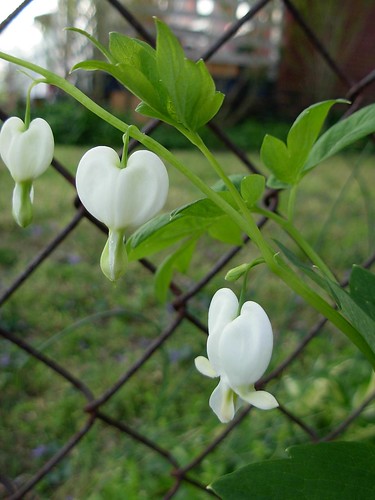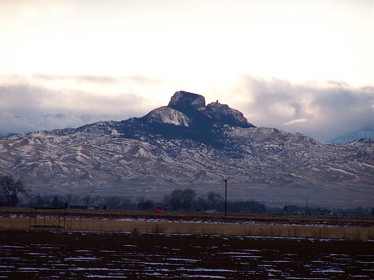
as yesterday's post came to an end, I realized I had not ventured into the science of hearts
1. Bleeding Hearts: the above variety from my front yard is pure white, but they do come in red and pink. It is a symbol of undying love. I hope to remember that this spring when they emerge and greet me as I walk down my porch steps. advice on growing this perennial
2. the rapidly beating heart. Generally speaking birds beat mammals which beat all else. It has to be with our "warm-blooded" metabolism. Hummingbirds can exceed 1000 beats per minute. Shrews win out for mammals which can have 800 beats per minute at rest and an excited shrew was clocked in at 1,511. It is believed that large mammals live longer because they do not wear out their body parts as quickly. The elephant hearts weighs in at 50 pounds and beats 30 times a minute.
3. the hibernating heart: The chipmunk goes from 200 to 5 beats per minute when it heads into hibernation.
4. The future heart transplant: Doctors have ventured into what would make amazing science fiction. They have found a way to take an organ, strip away all the cells, but leaving the protein matrix. Then provide cells and the right conditions and a dead heart can become functional again. If they master this technique, organ transplants could be revolutionized. Waiting to receive a donor liver would be replaced with waiting for your cells to create a new new liver on the matrix of another one. Rejection concerns would plummet. Watch the second chapter of this Nova Now to learn more.
5. 36 interesting facts about the human heart
6. no heart? If trees have no heart then how do they pump water to those high branches. The water is pulled by the leaves using the water and the evaporation out of the leaves (transpiration) and it helps that water is excellent at adhesion and cohesion so that the molecules can form a column. If the column broke, it would be hard to pull the water up.
7. Heart Mountain in Wyoming consist of material 300,000,000 years older than the rocks at its base.
8. The Heart Nebula is a place where stars are emerging.
...
1. Bleeding Hearts: the above variety from my front yard is pure white, but they do come in red and pink. It is a symbol of undying love. I hope to remember that this spring when they emerge and greet me as I walk down my porch steps. advice on growing this perennial
2. the rapidly beating heart. Generally speaking birds beat mammals which beat all else. It has to be with our "warm-blooded" metabolism. Hummingbirds can exceed 1000 beats per minute. Shrews win out for mammals which can have 800 beats per minute at rest and an excited shrew was clocked in at 1,511. It is believed that large mammals live longer because they do not wear out their body parts as quickly. The elephant hearts weighs in at 50 pounds and beats 30 times a minute.
3. the hibernating heart: The chipmunk goes from 200 to 5 beats per minute when it heads into hibernation.
4. The future heart transplant: Doctors have ventured into what would make amazing science fiction. They have found a way to take an organ, strip away all the cells, but leaving the protein matrix. Then provide cells and the right conditions and a dead heart can become functional again. If they master this technique, organ transplants could be revolutionized. Waiting to receive a donor liver would be replaced with waiting for your cells to create a new new liver on the matrix of another one. Rejection concerns would plummet. Watch the second chapter of this Nova Now to learn more.
5. 36 interesting facts about the human heart
6. no heart? If trees have no heart then how do they pump water to those high branches. The water is pulled by the leaves using the water and the evaporation out of the leaves (transpiration) and it helps that water is excellent at adhesion and cohesion so that the molecules can form a column. If the column broke, it would be hard to pull the water up.
7. Heart Mountain in Wyoming consist of material 300,000,000 years older than the rocks at its base.
8. The Heart Nebula is a place where stars are emerging.
...

I still like the orange and blue glass heart better, but you had some really fun info here!
ReplyDeleteSnowcatcher--- Thanks for the visit, by the way I clicked on the link to the Lizard's Blog and now I understand the nickname.
ReplyDelete